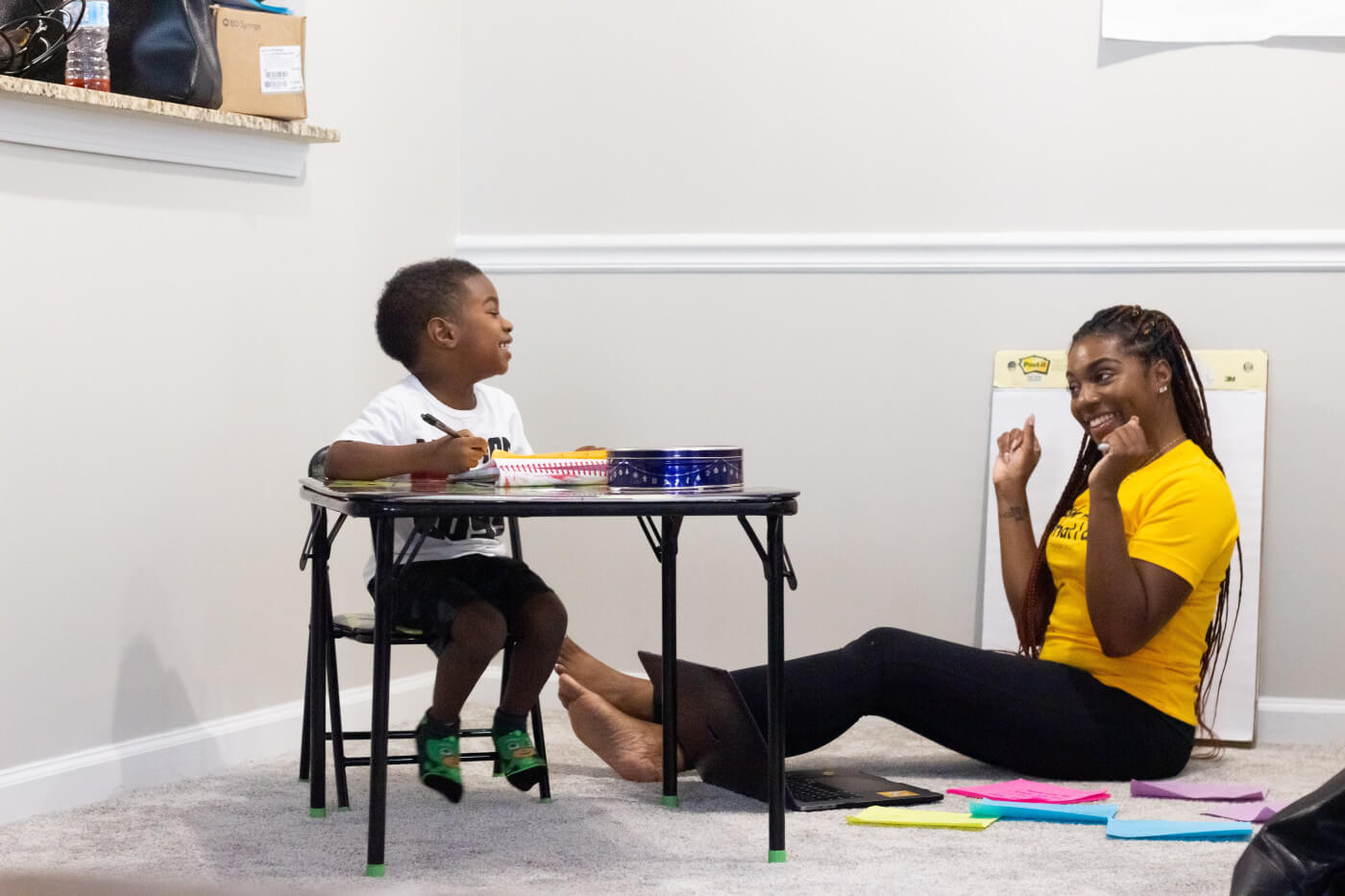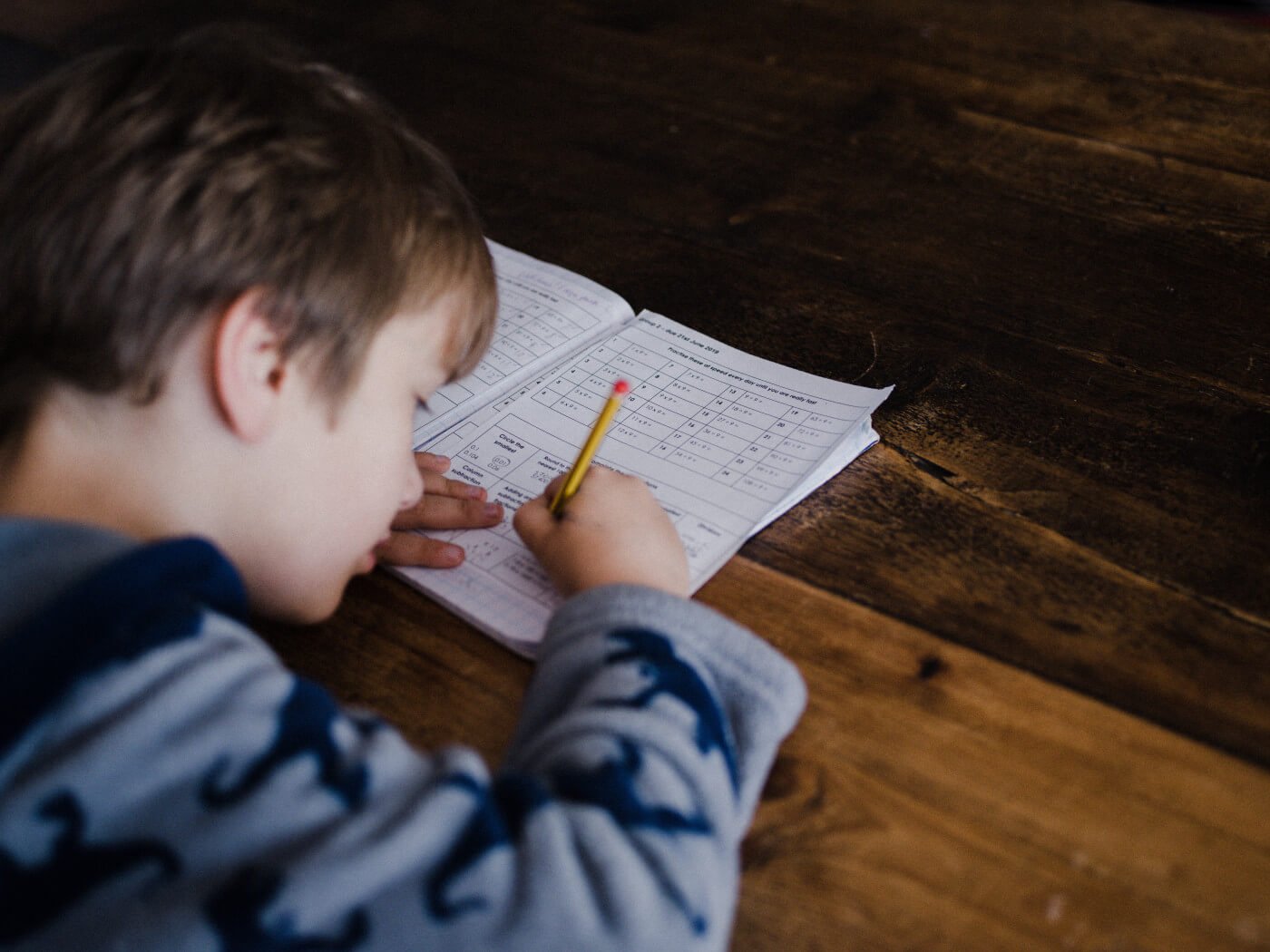How to Help Your Child Solve Word Problems

On the best of days, Maths can feel daunting! Solving a Maths equation when all the numbers are given to you can be anxiety-inducing enough, but with word problems, adding reading into the mix can make things especially tricky. While helping your child solve word problems, there are a few simple actions you can take, so both you and your child end the task with a smile on your face.
We recommend breaking the task down into manageable chunks. If children struggle with anxiety when faced with a whole word problem, we can show them that they don’t need to spiral, but instead, use a set method to solve it each time. This approach will work to bring down the panic and set your child in motion to happily tackle numerous word problems and make homework a breeze. If you want your child to be a confident problem-solver, then keep on reading!
Read the whole word problem
Many children forget to slow down and read the entire word problem before their brains go into solving mode. Before looking out for keywords or trying to figure out what to do, encourage your child to slowly read through the whole problem once. You want them to have an understanding of the bigger picture before beginning to solve the word problem. Doing this each time will help them build the habit of absorbing and collecting information which helps them feel more equipped.
Investigate the whole problem
There are three questions your children can ask which will help them determine what they are being asked to solve:
- What is the question? Sometimes there is extra information that isn’t relevant to the question at hand. Invite your child to discover what the word problem is actually asking.
- What action do I need to do? Next, have your child look over the keywords in the word problem to determine if they will need to add, subtract, multiply, divide, or some combination of those. Help them to understand tricky phrases like “increased by” or “groups of”. We have included a basic keyword chart below, to help you:
- Addition: in all, increased by, more than, combined, all together or altogether, total, sum, plus, added to, greater than.
- Subtraction: decreased by, minus, less, take away, difference, less than, fewer than, left or left over, smaller than, how many more, remaining.
- Multiplication: times, multiplied by, times more, product of, twice as much, each, every, groups of, rows of, of, by, at.
- Division: per, out of, ratio of, quotient of, percent, equal pieces, an equal amount, split, divided equally, each has, average, fraction of.
- What information do I already have? This is where your child can focus on the numbers that will be used to solve the word problem.
Write on the word problem
This step will help your child to reinforce the thinking they did in step two. Encourage your child to use a pencil, coloured pencil or highlighter to take note of important information on their worksheet. Have them circle the numbers they will use, cross out any information they won’t need, and underline phrases and sentences that tell them exactly what they will need.
Draw a simple picture
Drawing a picture can help your child to visualise the problem. Draw a picture using simple shapes like squares and circles, then add numbers or names as labels. For example, if the word problem says there are six boxes and each box has 3 carrots in it, your child can draw six boxes with the number 3 in each square. Older children can make a list or summary of the information they have gathered. This will help your child work out the answer much more easily!
Check their work once complete
We can imagine the aim is for your child to be more than just a number cruncher, and rather a great problem solver who understands the information they have been given. First, check your child’s work and then encourage them to check it themselves. Getting into the habit of checking their work means they are more likely to spot careless mistakes, which are a common cause of incorrect answers. If they got the answer wrong, ask them to try and find out where they missed out. Building up this habit will ensure the child aims for accuracy in future.
Practice word problems!
Have your child practice doing word problems. Just like it takes practice to master the piano or to throw a basketball into a hoop, it takes practice to master word problems. Practice makes word problems seem less scary and your child will start to become more confident with Maths! The more times someone is exposed to something, the more familiar it is to them and this reduces anxiety greatly as well. Encourage your child not to avoid word problems, but show them that they are capable even if it scares them.
If you find your child is not building confidence as quickly, a Teach Me 2 Tutor is a brilliant resource to help your child understand word problems and other Maths tasks that scare them. Your child’s Maths Tutor (Online Maths Tutors as well) can create word problems for your child to practice and will be a valuable asset in helping your child to master Maths tasks and to get their confidence back! They can also incorporate creative and stimulating activities to meet any child at their level of understanding. Teach Me 2 online Tutors have the needed experience to understand what is holding your child back from progress, and tailor the lesson plans according to their specific needs.
Click here to get your child their perfect Tutor!
Related Articles

Summer Holiday Activities For The Whole Family
Often the task of coming up with a list of activities that don’t break the bank can feel like a chore. Take a look at our list of summer holiday activities.
Read More

How To Get Your Child To Love Maths (Even If You Don’t)
Believe it or not, it’s possible to help your child develop a love for numbers! If you are looking for simple and practical ways to get your child to love maths, then keep reading.
Read More

How To Determine Your Child’s Learning Style
Did you know that everybody has a learning style? A learning style is simply how a person best learns and retains information.Do you often find yourself getting
Read More

We help families find their perfect tutor
Help your child improve their grades and get their confidence back.
GET A TUTOR